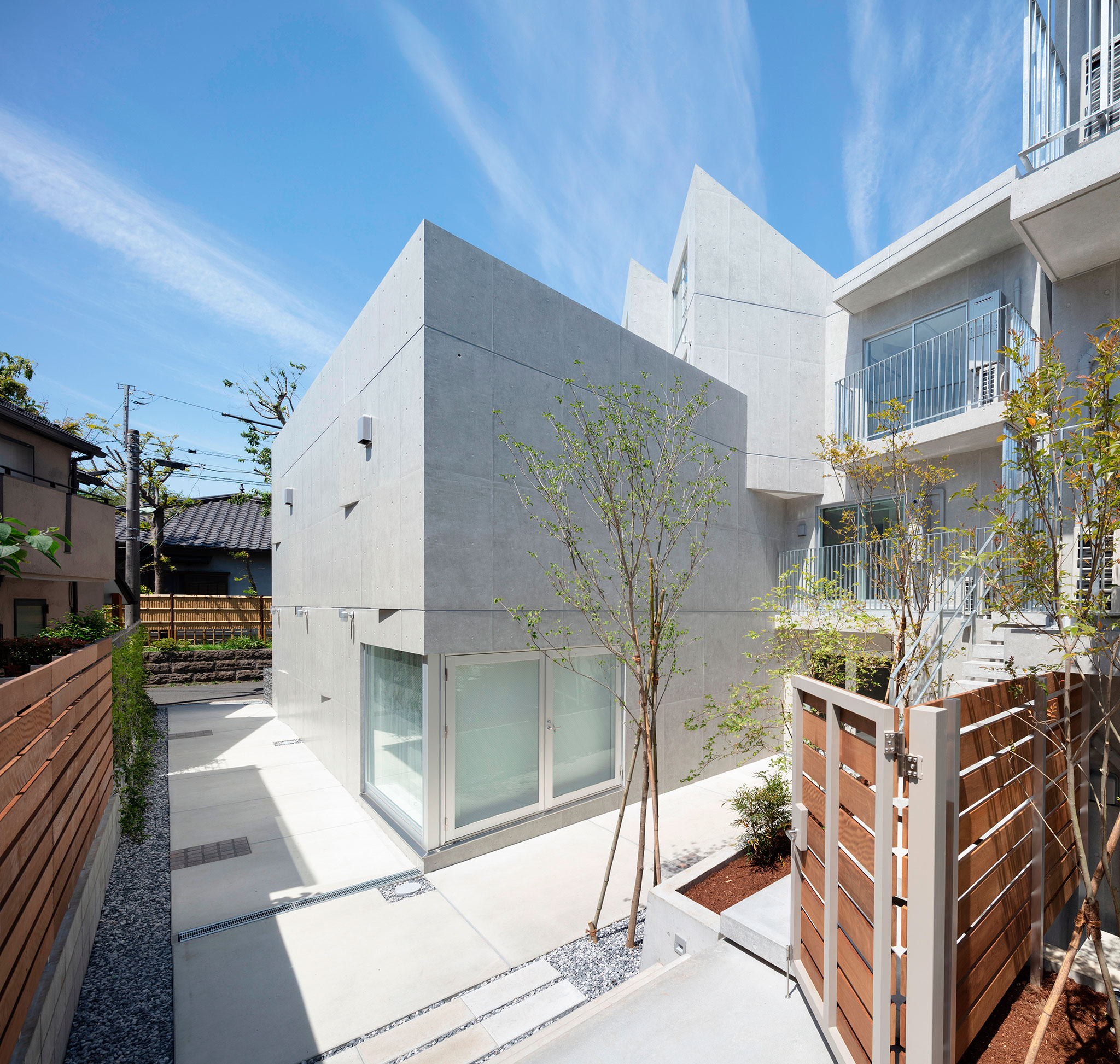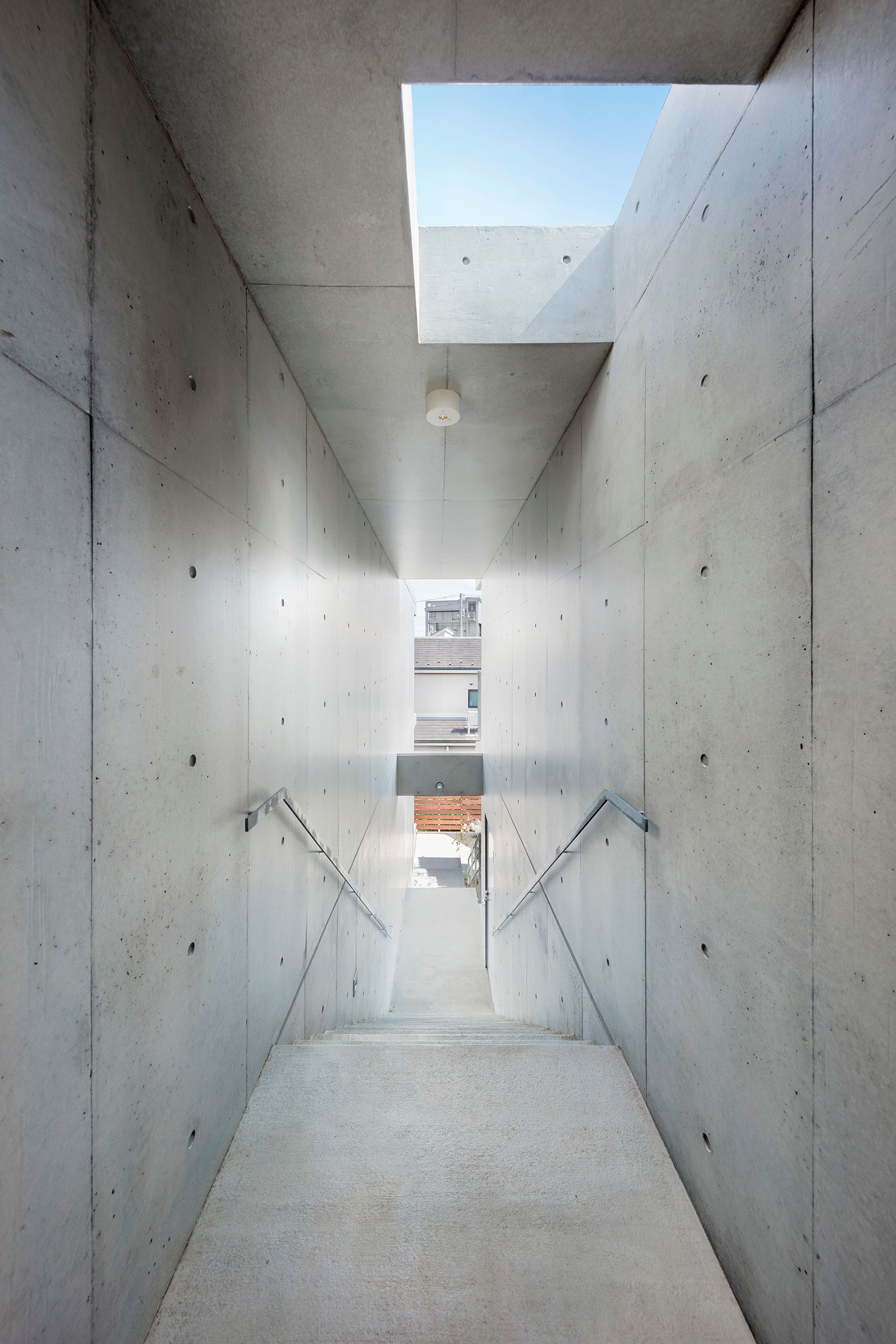The project drew on this area’s vibrant character and cultural identity to develop the design, a reinforced concrete structure, built with special delicacy and attention to detail, combining performance space, practice rooms, and soundproofed residential rental units, as well as a penthouse at the very top. A variety of spaces for musical activities which are to be used at different times in a hybrid way.

Ideareave Ikegami by Ryuichi Sasaki Architecture. Photograph by Takumi Ota Photography.

Ideareave Ikegami by Ryuichi Sasaki Architecture. Photograph by Takumi Ota Photography.

Ideareave Ikegami by Ryuichi Sasaki Architecture. Photograph by Takumi Ota Photography.
Project description by Ryuichi Sasaki Architecture
The project is located at the foot of the Ikegami Honmonji Buddhist temple, renowned for its massive five-story pagoda erected in the early 17th century, the Ideareve-Ikegami is located in the south Tokyo town of Ikegami, a cultural hub comprised of smaller temples, cafes, stores, and residential zones. The mandate for Ryuichi Sasaki Architecture was to design a facility for the town where residents can gather, express their creativity, and study music in a variety of hybrid spaces. The firm embraced the mandate and responded in a stunning geometrical fashion.
A seamless blend with the environment
To the northwest of Ikegami’s largest cluster of residences, the complex sits on a trapezoidal site, just east of the town’s temples and cafes that cater largely to migrant waves of pilgrims en route to the temple. The two-story music hall and its 80-seat theatrical auditorium occupy a strategic place in the southwest corner of the structure, entered via a vestibule and foyer that combine to form a circulation zone that blurs the lines between the inspiring, undulating hills of the external landscape and the vibe of creativity that awaits inside. The foyer is embraced by three brass-coloured, stainless steel diagonal walls, and the interior of the hall is encased in acoustic reflectors, with large walls that collectively form an abstract diagonal shape. Glass surfaces and multiple entranceways further embolden connections between the music hall and the surrounding landscape, with the latter embellished by gabion walls that delineate a garden of various species of plants.
Spatial reconfigurations
Towards the centre of the building, the residential zone shares its entranceway with the music hall and is accessed via a staircase marked by architectural elements symbolically paying tribute to the climb to the Ikegami Honmonji temple. At the top of the staircase, a series of sound-proofed rental homes line the corridor, each comprised of a kitchen, bathroom, soundproofed living room, and sleeping quarters. The residential volume also houses a penthouse unit, comprised of three-volume areas featuring sliding walls that enable maximum spatial configurations of its spaces. By reconfiguring the sliding walls, the living room and dining room areas can be enlarged to accommodate a variety of logistical situations. The sleeping quarters can also be reconfigured from a master bedroom into multiple bedrooms to accommodate other family members or houseguests.
Finally, above the music hall, a large terrace further fuses the seamless border between the building’s interior and exterior, incorporating inspirational views of the majestic landscape for the benefit Ideareve-Ikegami patrons.
“Views from the residential area, as well as the music hall circulation areas, were designed to inspire emotions conducive to musical creativity and melodic rhythms. The project contributes to the blending of culture and hospitality that characterizes the town, and we are proud to provide this complex for the joyful use of residents of Ikegami.”
Ryuichi Sasaki.


































































































